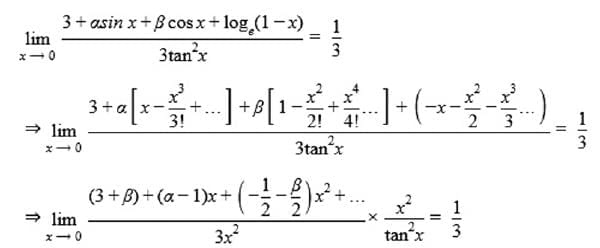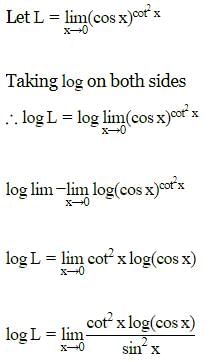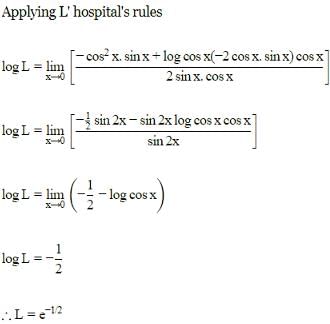Test: Limits And Derivatives - 1 - JEE MCQ
25 Questions MCQ Test Mathematics (Maths) for JEE Main & Advanced - Test: Limits And Derivatives - 1
Let f (x) = x sin 1/x, x ≠ 0, then the value of the function at x = 0, so that f is continuous at x = 0, is
The positive integer n so that limx→3 (xn – 3n)/(x – 3) = 108 is
Let for a differentiable function f: (0, ∞) → R, f(x) - f(y) ≥ logₑ(x/y) + x - y, ∀ x, y ∈ (0, ∞). Then ∑ from n = 1 to 20 of f'(1/n²) is equal to __.
Let f(x) = x³ + x² f'(1) + x f''(2) + f'''(3), x ∈ ℝ. Then, f'(10) is equal to:
Suppose f(x) =  then the value of f(0) is equal to
then the value of f(0) is equal to
Let y = logₑ( (1 - x²) / (1 + x²) ), -1 < x < 1. Then at x = 1/2, the value of 225(y' - y'') is equal to:
lim (n → ∞) { (21/2 - 21/3) (21/2 - 21/5) ... (21/2 - 21/(2n+1))} is equal to
lim (x → 0) (( (1 - cos²(3x)) / cos³(4x) ) * ( sin³(4x) / (logₑ(2x + 1))⁵ )) is equal to _____
If α > β > 0 are the roots of the equation ax² + bx + 1 = 0, and
lim (x → 1/α) { (1 - cos(x² + bx + a)) / (2(1 - ax)²) }^(1/2) = 1/k ( (1/β) - (1/α) ), then k is equal to ____
Among
(S1): lim (n → ∞) ( 1/2 ) ( 2 + 4 + 6 + .... + 2n ) = 1
(S2): lim (n → ∞) ( 1/16 ) ( 1¹⁵ + 2¹⁵ + 3¹⁵ + .... + n¹⁵ ) = 1/16
If 2xy + 3yx = 20, then dy / dx at (2, 2) is equal to:
|
209 videos|447 docs|187 tests
|
|
209 videos|447 docs|187 tests
|


 is equal to
is equal to  is equal to
is equal to
 is equal to
is equal to 
 is equal to
is equal to
 is equal to
is equal to  is equal to
is equal to 1/3, then 2α - β is equal to:
1/3, then 2α - β is equal to:
 is equal to
is equal to is equal to
is equal to

















